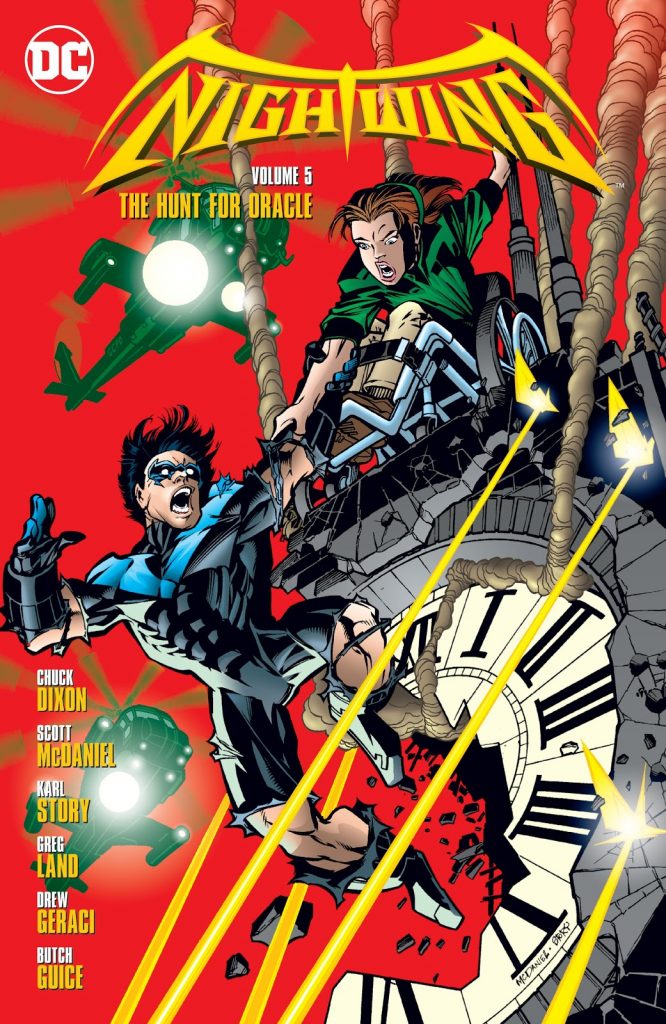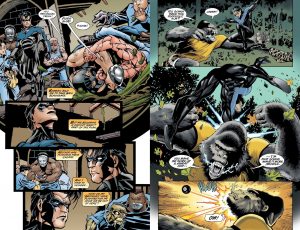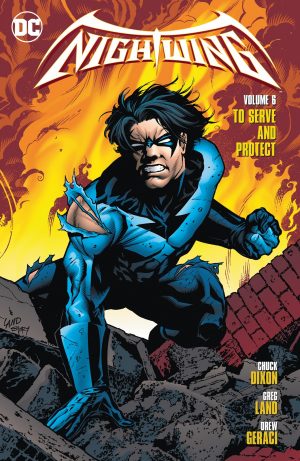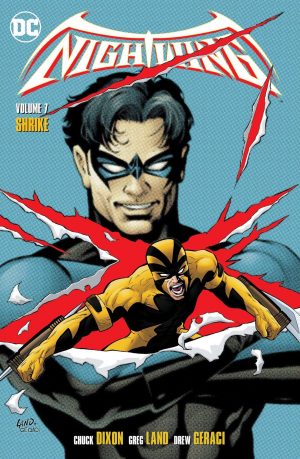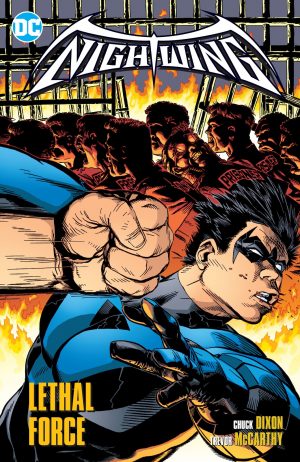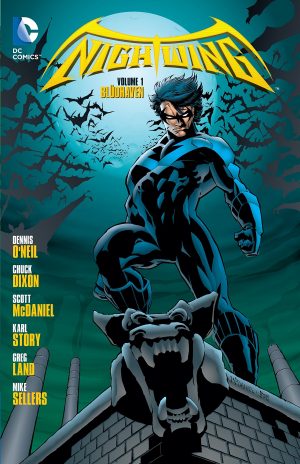Review by Ian Keogh
In these 21st century reissued collections of Nightwing’s 1990s activities The Hunt for Oracle is a transitional volume, featuring the final series of art of Scott McDaniel followed by the very different approach of his successor Greg Land.
In the earlier editions most of McDaniel’s work here was found in A Darker Shade of Justice, the centrepiece of which was an extended tale set in Gotham’s Blackgate prison. As ever, there’s no faulting McDaniel’s detail, but his stylised versions of Blackgate’s residents make them resemble the shambling zombie extras of The Walking Dead rather than recognisable humans. He takes his style too far in the direction of grotesques, while his elastic anatomy in the service of dynamic poses draws the attention for all the wrong reasons. Chuck Dixon’s unusually uninspired by this story also, perhaps having a crossover with Batman’s trials in No Man’s Land forced on him.
Dixon works up more enthusiasm for McDaniel’s final two contributions, one another escape story, but more inventive this time, with Oracle under siege from rogue Gotham police. It’s followed by a nice heroic outing for Jonathan Law, whose World War II past as costumed adventurer the Tarantula comes calling. Strangely absent from the earlier reprints, Dixon avoids ridicule by having the conflict as imagined by the Tarantula rather than the actuality of two very old people going at each other. Both stories raise the quality level considerably, and the second is structured to combat McDaniel’s stylistic excess via the frequent use of almost full page images.
Bridging McDaniel’s swansong and the title story is Dick Grayson’s graduation, enabling him to become an officer within Blüdhaven’s notoriously corrupt police department, and Dixon slides sideways into ‘The Hunt for Oracle, which is a thriller from start to end. In the 1990s Barbara Gordon was Oracle, astonishing computer hacker, although this was known to very few, her Birds of Prey allies not even in on the secret to start with. She funds her activities and security by filtering money from the bank accounts of criminals, and Blüdhaven’s Blockbuster isn’t happy about it, initiating two methods of tracking down Oracle.
Dixon was also writing Birds of Prey at the time, so crosses over Nightwing’s activities with theirs, although in practice that team is only Oracle and Black Canary. There’s a constant tension, some misdirection, and a large cast that Dixon manoeuvres very efficiently. Land’s more figurative art is very welcome, and very good, echoed by Butch Guice and Patrick Zircher on their chapters. The only problem is an unsatisfying ending, despite a sort of line being drawn, and the novel idea of starting a story with a few chapters in one title before transferring it to another. Dixon followed up on several plot threads in Birds of Prey, but no fourth collection of his work on that title has been issued, so anyone wanting to know how everything ends will have to pick up individual issues of Birds of Prey beginning with 22.
While the first third of the book doesn’t hit the spot, the remainder is good superhero material, meaning this is a collection still worth looking out. With Oracle found, Dixon turns his attention to Dick’s police career next in To Serve and Protect.
